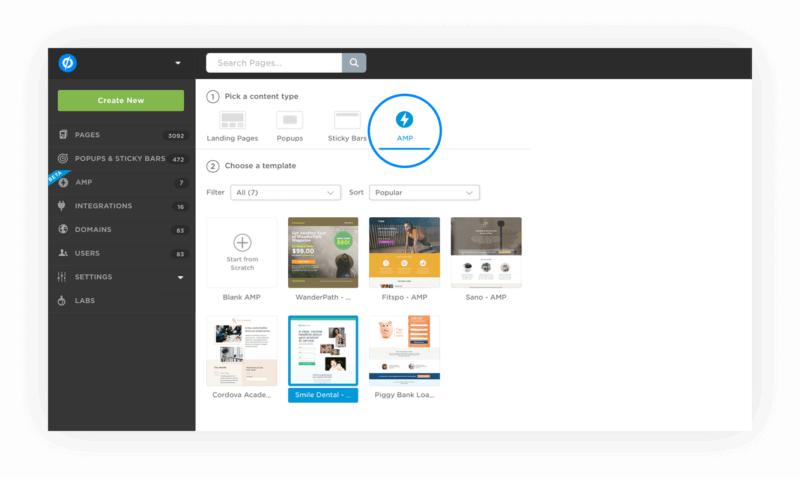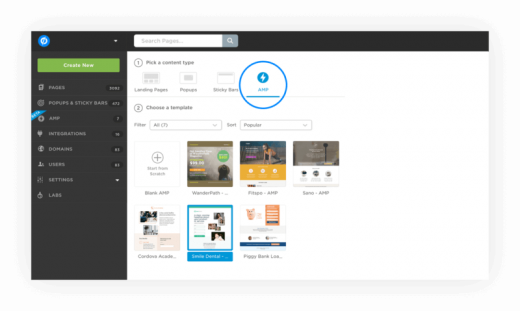Meet Unbounce’s drag-and-drop builder for AMP landing pages
The new feature is included in Unbounce’s Premium and Enterprise plans.

Unbounce has built a drag-and-drop feature for creating AMP landing pages that removes the need for HTML or JavaScript coding expertise.
Why you should care
Accelerated Mobile Pages effectively reduce mobile page load times and optimize the overall user experience on mobile devices, but creating AMP content can be time-intensive and usually takes the expertise of a developer. Unbounce’s new feature is designed for marketers who are in need of AMP landing pages, but lack the time, resources or developer skills to invest in AMP initiatives.
The drag-in-drop tool makes it possible to create AMP landing pages using templates or a fully customizable page offered in Unbounce’s Premium and Enterprise paid plans. Marcel Heymuth, the senior performance marketing manager for Exporo, said his team was thrilled with the new offering: “All of our landing page specialists can build AMP pages quickly and easily without having to resort to IT resources.”
Unbounce recently reported only 40 percent of 750 consumers it surveyed were willing to wait more than seven seconds for a page to load. This is a conservative number compared to Google’s findings last year that 53 percent of mobile site visits result in a bounce if it takes longer than three seconds to load. The primary benefit of Unbounce’s feature is that marketers and website owners can create an optimal mobile experience without having to rely on a developer to create AMP content.
More on the news
- Unbounce’s drag-and-drop feature for building AMP pages is included in the Premium plan that costs $159 a month or the Enterprise plan which is $399 a month. (The company does offer a free-trial.)
- The feature includes a “Validate” function to verify the landing page meets all of Google’s AMP requirements.
- The feature is designed to simplify the AMP landing page creation process, but marketers do have the option to add AMP-compatible HTML, CSS or JavaScript elements.
This story first appeared on MarTech Today. For more on marketing technology, click here.
Marketing Land – Internet Marketing News, Strategies & Tips
(30)



